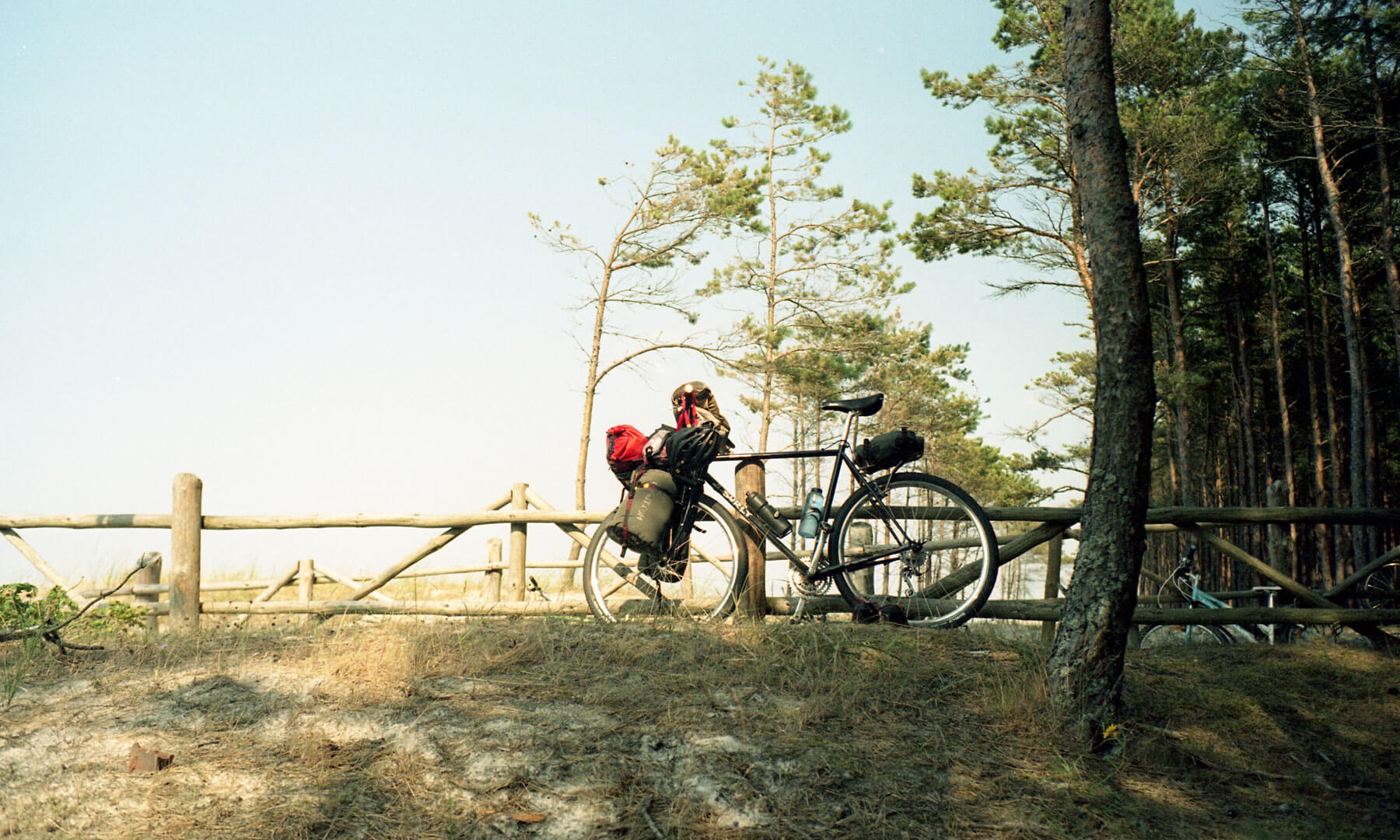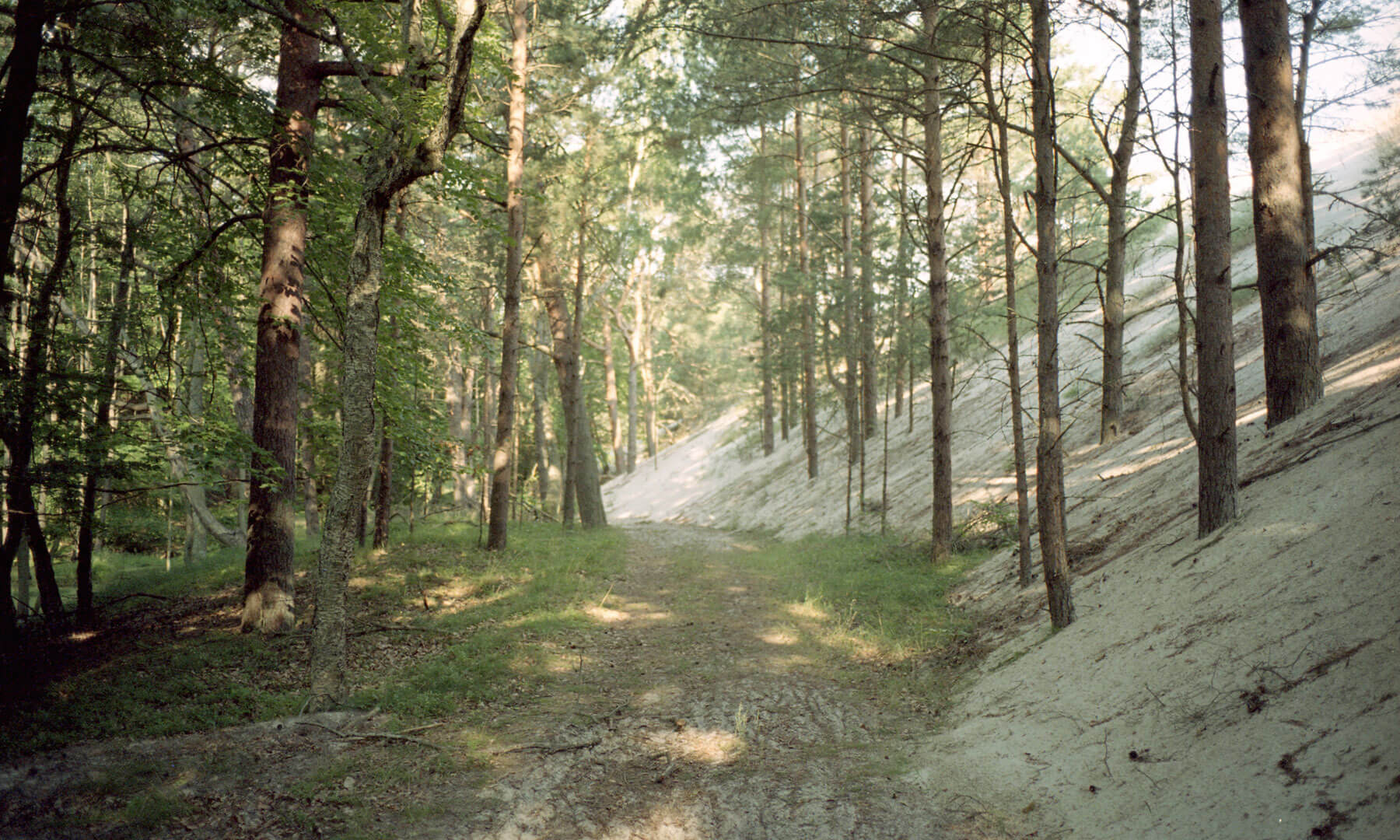The Hunt Cycling is a full service bike-shop, independent journal and collective consisting of three cycling enthusiasts based in Halle Saale. We try to explore, document and share our experiences in the field of cycling and beyond. Besides drinking shandy, lots of riding and intellectual discusses about bike parts and stuff, we enjoy riding with friends and running our showroom and bike-shop located in the center of Halle.

The summer slowly is coming to his end and autumn is just around the corner. Temperatures fall day by day, the nights are getting cooler and the sun is becoming increasingly rare. Time to review the last big cycling trip of the summer. Roughly two years ago we first talked about a bike packing trip to the baltic sea. The journey that we have planned for this year should lead us not only directly to the baltic sea but even further along the baltic coast. We had a fixed, recurring and yearly cycling tour in mind that should lead us out into nature for a maximum of two weeks. It was clear to us where we wanted to start – Greifswald, the city where we arrived two years ago. We wanted to ride an average of about 100km per day. We wanted to try it at least. With six to seven days of cycling we could estimate the approximately length of our route and how far we can make it. Thus our route for this year was made: Greifswald — Gdansk.

A route like Greifswald — Gdansk is absolutely not comparable with self-supported off-road races like the Oregon Outback or the Tour Divide. You are not completely on you own but you always have to support yourself, at least somehow. Eating, drinking and sleeping is not a big problem in a densely populated area like the Polish coast. But no matter how much time to Schedule, one day, two days a week or more, a few things need to be prepared nonetheless. Our bikepacking list has become quiet long. Cooking equipment, some bicycle tools, repair kits, pump, a tent, tarps, clothes, rain pants, bug spray, sunblocker, camera equipment, charging tools for batteries — the list goes on and on. We did a few bikepacking trips in the past that’s why we were quiet familiar with how to pack the bikes for a eight day trip.

The official Polish bike path called R10, leading along the coastline to Gdansk, is a beautiful route linking coastal towns like Swinemünde, Dziwnów, Kołobrzeg, Darłowo, Ustka, Łeba and Hel with Gdynia, Sopot and Gdansk. The route combines busy towns and resorts with nature reserves, forests, secluded beaches and large dunes along the way. As a hint: some holiday resorts are pretty crowded during the summer months. It makes sense to bypass some of these towns. The condition of the bike paths we found in the maps can be described as followed: in perfect condition to literally non existing. Beautiful routes along the coastline, sleepy towns, hidden forest trails, dirt gravel and a lot of sand. Thats the conditions we had to deal with. Nothing dramatic but altogether a lot of fun.

Poland is amazing. The people are very warm-hearted and helpful. The food is affordable and the beer is sold in cans. We recommend you to try a icecold „Radler“ a Polish shandy that you can find in every well sorted grocery store. They call it Sklep. We used a cycling map from „bikeline“ for orientation. But the resolution wasn’t high enough for some regions so we had a few trial and error situations of finding the right direction. Also because the official R10 signs simply doesn’t exist on a lot of routes. That only gave us some nice extra adventure moments. We also had to change money once we crossed the boarder because Poland is not a member of the „Eurozone“. Poland indeed joined the EU in 2004 but has not introduced the Euro to this day. That’s kind of annoying but wasn’t a big problem overall. There are a lot of exchange points in every town along the coast and it was easy and quick to change Euros into Złoty.

We arrived in Gdansk via ferry from Peninsula Hel after seven days of bicycle touring and a traveled distance of 620km. Overall we slept five times on the beach, and two times on official low-priced camping grounds. Gdansk is amazing. The old-town of Gdansk is one of Europe’s largest historical centres and was rebuilt after the WWII. By far the most famous landmark of Gdansk is the old port crane in the ports centre built out of bricks and wood. Since 1962 it is used as a maritime museum and is one of the oldest lifting devices in the former German-speaking countries. Definitely a must see. Next year we will continue to cycle the R10 which should hopefully lead us further north across Kaliningrad to Lithuania and Latvia. Enjoy the beautiful analogue gems. To be continued …



















